Climate change: Shoppers say they go 'thrifting' to be sustainable
- Published
Student Elanor Plant offers up her five top tips for successful thrifting
Black Friday bargain-hunting is well and truly under way. But while many are still seeking out the best deals on the latest brands, others have caught on to the growing trend of "thrifting", resulting in a second-hand sales boom. But what are the reasons for it? The BBC spoke to a series of "thrifty" shoppers to find out.
'Fast fashion is not great for the environment'
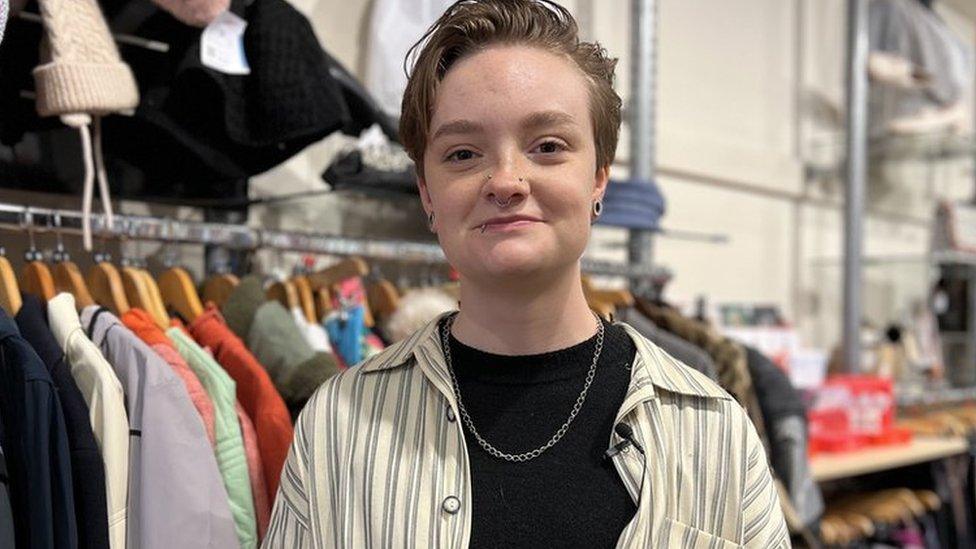
Ms Plant credits her mother with her sustainable shopping habits
Elanor Plant has been buying second-hand clothes her entire life.
She said her mother made her realise how important it was to recycle clothes.
"As a kid I used to find it really annoying as I didn't want to be dragged around every shop," she said.
"But honestly she raised me well."
The 21-year-old graphic design student, from Winchester, said old-fashioned stigma around charity shops was lifting and they are now becoming more and more popular.
"The variety is more fun... it's cheaper - which is great when you're a student .
"And fast fashion is just not great for the environment, so it's nice to know that something had a home first and then you give it a second lease of life."
The Charity Retail Association, which represents 470 charity members from across the UK, said sales from charity shops have increased by 10% in the past months.
Sustainability is one of the biggest reasons for such a rise, the group said.
'It's not going in landfill'
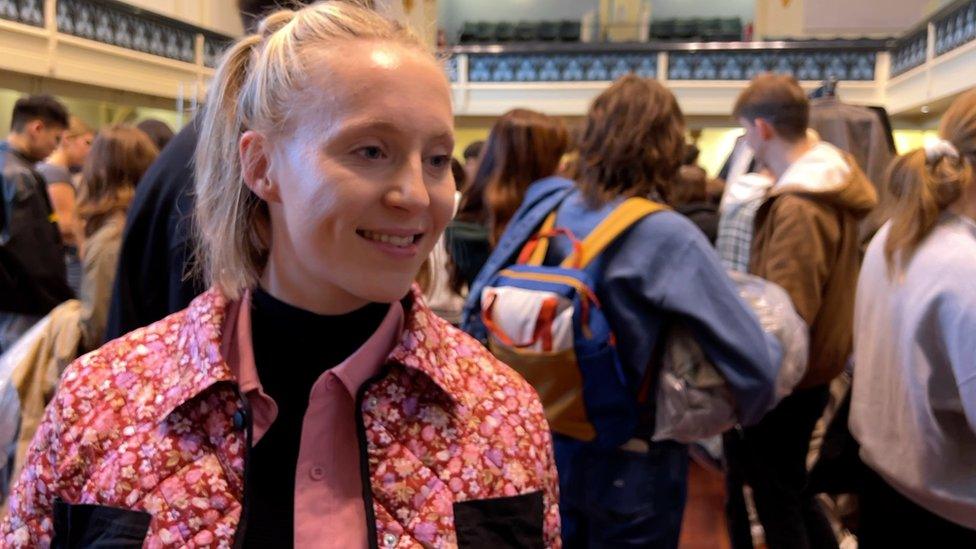
Steph Hettle hopes to see more people buy second-hand clothes
Primary school teacher Steph Hettle said she could afford to buy new clothes but preferred second-hand shops.
"I quite like that I am helping the environment," the 27-year-old from Southampton said.
"I am keeping things reused - it's not going in landfill basically and I think that's important."
So-called "fast fashion" is a major contributor to greenhouse gases, water and air pollution, creates problematic levels of waste, and often comes with poor working conditions in other countries.
The fashion industry is considered responsible for 2-8% of global greenhouse gas emissions, according to the UN, external.
'It's a responsibility for my generation'
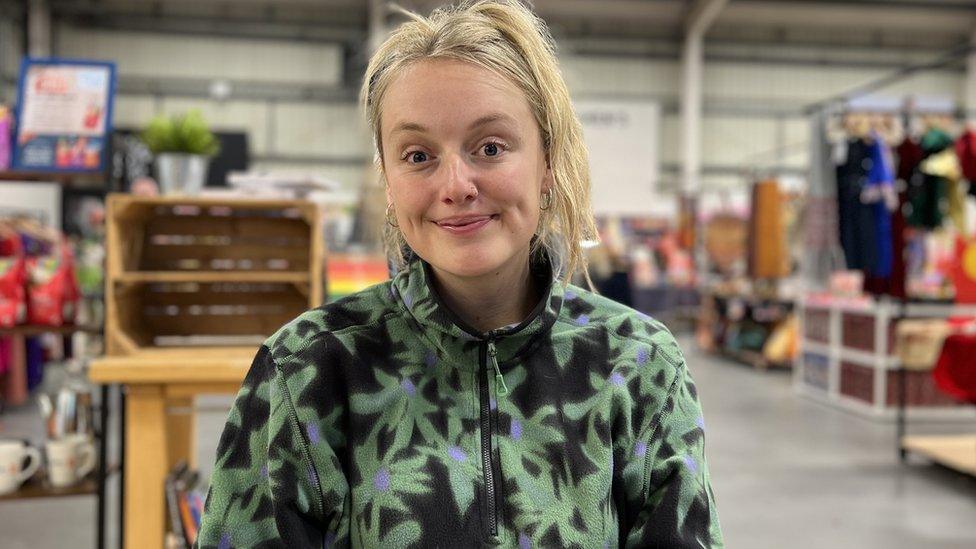
Molly Billingsley often goes shopping at the Oxfam Superstore in Oxford
Molly Billingsley, 29, from Thame in Oxfordshire, decided to start buying and selling second-hand clothes a couple of years ago.
"I realised I buy lots of stuff, wear it twice and then what happens to it? It's sat in a wardrobe.
"But it's not good for the planet and it's not good for me financially."
She believes people are becoming more aware of climate change and the need for sustainable fashion.
"We need to all be pulling together.
"We know what's happening in the world, we know the changes that we need to make - so it is a responsibility for my generation, and above and below."
'Gen Z are driving the change'
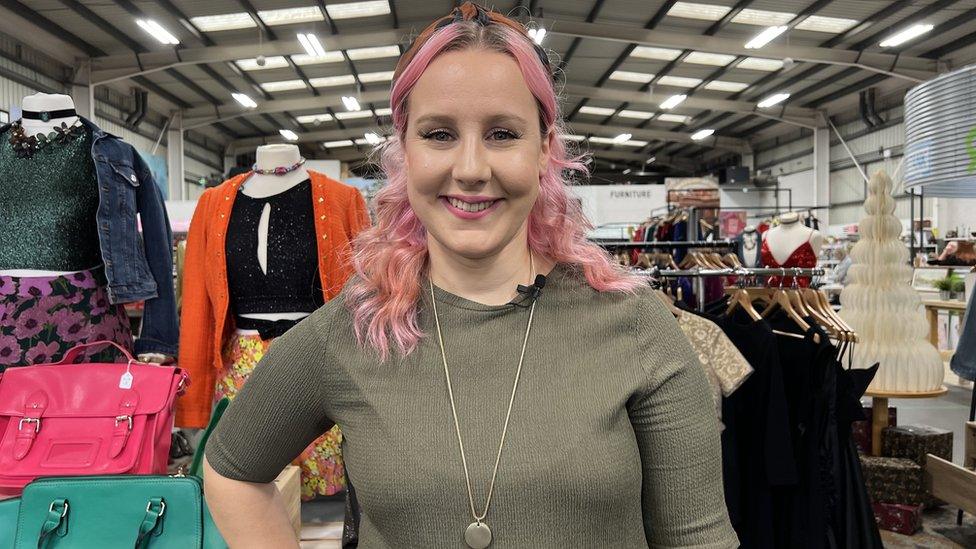
Zara Canfield changed her shopping habits in 2019
In 2019, Zara Canfield, a volunteer marketing manager at Oxfam, decided not to buy new clothes for one year.
Four years on she still has stuck to that pledge and said she has seen many other young people exploring second-hand shopping at Oxfam.
The 30-year-old said Gen Z are driving the change in shopping habits.
"I do think climate change is now at the top of people's minds," she said.
"So it is a driving factor in terms of people's shopping habits and people are looking for small ways to change their lifestyles and shopping second-hand is a really small way and an easy way."
'There's a backlash against fast fashion'
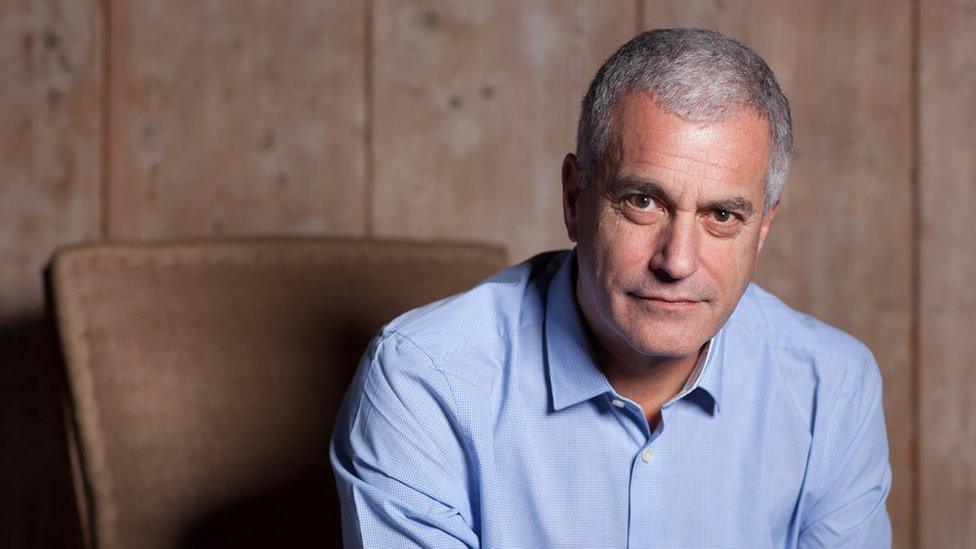
Robin Osterley, of the Charity Retail Association, said shoppers were becoming more sustainability conscious
The Charity Retail Association (CRA) has recorded 10.8% growth in like-for-like in-store income in 4,309 charity shops between July and September 2021 and the same months in 2022.
The organisation said 57 charities representing 4,385 shops also reported a 8.5% growth in like-for-like in-store income in April-June 2023 compared to the same period of time the previous year.
Robin Osterley, the CRA's chief executive officer, said charity shops have been particularly benefitting from "sustainability shoppers" in the past five years.
He added: "I think there's a growing backlash - if that's the right word - against the whole fast fashion thing.
"A lot of fast fashion results in really excessive over-manufacture of clothing, we make too much stuff, and I think people are starting to realise that."
'It's an important solution'

Dr Brown has said that second-hand shopping is only one of the many actions needed to tackle the current climate crisis
Sass Brown, course leader in sustainable fashion at Kingston University, said the number of people buying second-hand clothes worldwide is outstripping the one of those buying first-hand items.
She explained that the biggest problem was the mainstream fashion system of consumption and of discarding poor quality clothing, and said that second-hand shopping is one of the many solutions that could help solve the problem.
"It's actually not a small component of it, because if the basis of our problem is the scale of consumption and waste, then keeping clothing in use for longer is a very viable response to the impacts of discarding it. So it is an important one," she said.
She said the forecast is for the second-hand market to continue to grow, but that more solutions to climate change will also be needed.

Follow BBC South on Facebook, external, X, external, or Instagram, external. Send your story ideas to south.newsonline@bbc.co.uk, external.
- Published29 July 2022
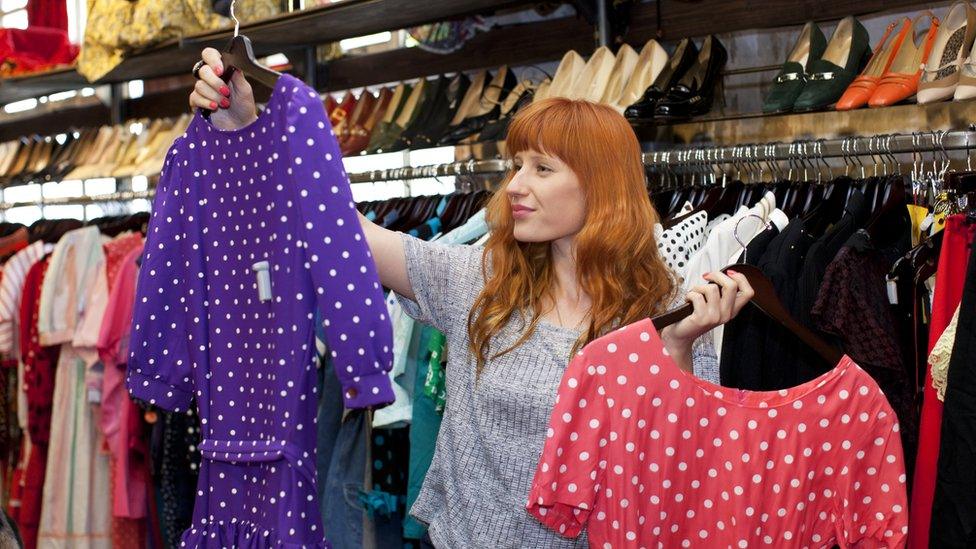
- Published24 May 2022

- Published19 June 2019
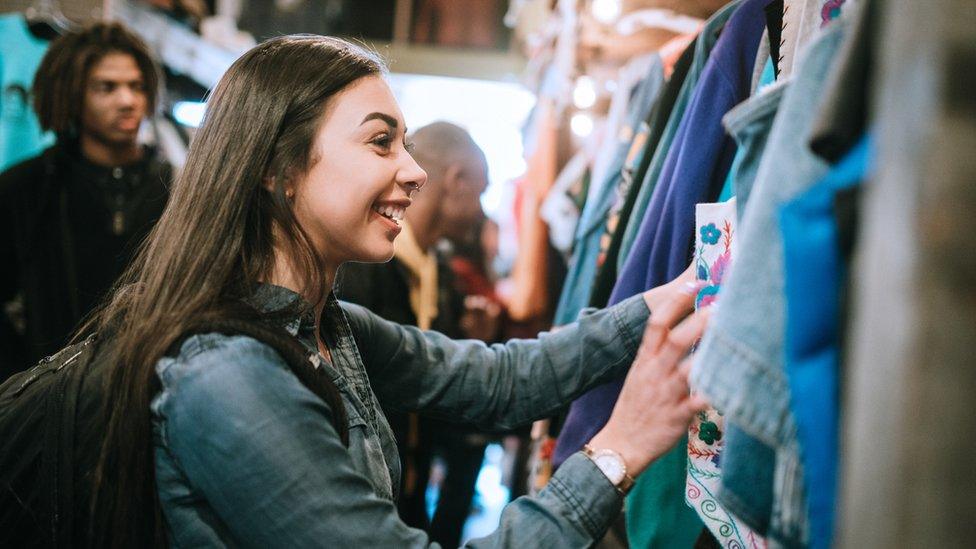
- Published4 November 2022
